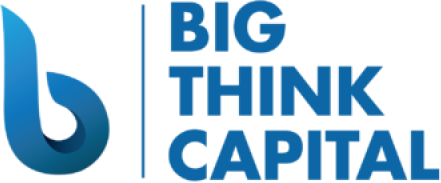Navigating the Impact of 2025 Inflation Trends on Small Business Financing
Estimated reading time: 6 minutes
- Understanding inflation and its impact on small business financing is crucial for entrepreneurs.
- Small businesses face increased borrowing costs due to rising interest rates.
- Proactive strategies can help manage price and tariff increases.
- A balanced financing portfolio is essential for resilience.
- Improving your credit score can enhance lending opportunities.
Table of Contents
- Understanding Inflation and Its Impact on Small Business Financing
- Effects of Recent Fed Interest Rate Decisions on SBA Loans, Working Capital Advances, and MCAs
- Strategies to Manage Potential Price and Tariff Increases with Proper Financing
- Building a Resilient Financing Portfolio: Balance Between Business Lines of Credit and Equipment Financing
- Making Smart Decisions: Improving Your Credit Score and Strengthening Bank Relationships in the Current Economic Climate
- Conclusion
- FAQ
Understanding Inflation and Its Impact on Small Business Financing
Inflation refers to the general increase in the prices of goods and services over time, which decreases the purchasing power of currency. The U.S. has experienced growing inflation rates, reaching levels not seen in decades due in part to supply chain disruptions and increased consumer demand post-pandemic. For small businesses, navigating inflation can mean the difference between thriving and merely surviving.
The impact of inflation on small business loans is multifaceted:
- Rising Costs: Businesses are finding it more expensive to procure inventory, pay employees, and manage overhead costs. This creates an immediate need for additional financing.
- Interest Rates: To curb inflation, the Federal Reserve has been adjusting interest rates, meaning business owners need to be aware of how the add-ons to loan payments can affect their cash flow and bottom line.
- Lender Sensitivity: As lenders assess risk, fluctuating inflation rates can lead to more stringent approval processes and potentially higher costs for borrowing capital.
Awareness of these factors is essential in making informed financial decisions, especially as inflationary pressure sustains into 2025.
Effects of Recent Fed Interest Rate Decisions on SBA Loans, Working Capital Advances, and MCAs
The Federal Reserve’s interest rate adjustments throughout 2024 and into 2025 aim to mitigate inflation. As of early 2025, the Fed’s decisions have led to increased borrowing costs for small businesses:
- SBA Loans: The Small Business Administration (SBA) loans, traditionally seen as a favorable financing option due to their lower interest rates, are now reflecting the Fed rate hikes. This means small business owners may face higher repayment amounts, affecting their long-term planning.
- Working Capital Advances: The cost of accessing immediate working capital has also risen. Businesses may find themselves paying more to secure rapid financing solutions, which can strain their financial resources if not carefully managed.
- Merchant Cash Advances (MCAs): While MCAs offer quick access to funds, they often come with higher costs. As interest rates rise, the total cost of borrowing through MCAs may limit their attractiveness for small business owners, compelling them to explore other options.
These developments suggest that small business owners need to stay informed about the current lending landscape and prepare for adjustments in their financing strategies.
Strategies to Manage Potential Price and Tariff Increases with Proper Financing
Given the ongoing inflationary pressures leading to price increases on goods and services, small business owners must adopt proactive strategies to protect their financial health. Here are a few strategies to consider:
- Budgeting for Uncertainty: It’s vital to create a flexible budgeting approach that takes into account potential price increases. Including a buffer in your financial plans can help mitigate risks from unexpected costs.
- Leveraging Equipment Financing: Investing in energy-efficient equipment can lower long-term operational costs. Financing options for new equipment can free up capital to manage rising prices effectively.
- Utilizing Lines of Credit: Establishing a line of credit provides businesses with a financial safety net. A flexible line of credit allows you to draw funds as needed without incurring interest until the amount is used. This can help you navigate cash flow challenges posed by inflation.
- Implementing Pricing Strategies: Consider adjusting pricing to pass on only a fraction of increased costs to customers. This can help maintain profit margins without alienating your customer base.
Implementing these strategies enables small businesses to remain agile in the face of economic uncertainty, managing the impact of inflation more effectively.
Building a Resilient Financing Portfolio: Balance Between Business Lines of Credit and Equipment Financing
A key aspect of navigating today’s financial climate is developing a diversified financing portfolio. Here’s how small business owners can effectively balance their options:
- Business Lines of Credit: These facilities provide immediate access to cash and are useful for overcoming short-term challenges. They can also serve as a financial cushion when unexpected costs arise without the obligation of a fixed payment schedule.
- Equipment Financing: Investing in equipment financing can lead to increased production efficiency and potential cost savings. This longer-term investment reduces reliance on short-term debt, thus stabilizing financial health over time.
- Mixing Financial Products: By thoughtfully mixing different types of financing options, businesses can tailor their cash flow strategies to meet both short- and long-term needs. Some funds could be used for quick access while others are allocated for capital investments, creating a balanced, resilient financing structure.
Diversifying your financing strategies helps shield your business from market volatility and better positions you for growth despite inflationary pressures.
Making Smart Decisions: Improving Your Credit Score and Strengthening Bank Relationships in the Current Economic Climate
Maintaining a strong credit score is paramount for small business owners seeking favorable lending terms. As we move through 2025, here are practical tips to boost your creditworthiness:
- Regularly Monitor Your Credit Report: Keeping an eye on your credit report helps identify discrepancies that may adversely affect your score. Dispute any errors immediately to ensure your credit reflects your financial responsibility.
- Pay Bills on Time: Consistently paying bills on or before their due dates significantly impacts your credit score. For business loans, this shows lenders that you are a reliable borrower.
- Limit New Credit Applications: Each credit application can temporarily lower your score. When seeking financing, space out applications and focus on the most essential financial products your business needs.
- Build Strong Relationships with Lenders: Establishing open lines of communication with your bank can lead to better financing opportunities. Being transparent about your business needs and performance can enhance trust and create supportive lending relationships.
Focusing on these areas will not only improve your credit score but also solidify your standing with banks and financial institutions, making future borrowing more manageable.
Conclusion
As inflation trends continue to influence the economic environment in 2025, small businesses must adapt their financing strategies accordingly. Understanding the impacts of inflation on various lending products, implementing smart financial strategies, balancing your financing portfolio, and improving your credit score are key steps to ensure financial resilience during these challenging times.
At Big Think Capital, we specialize in helping small businesses secure the financing needed to thrive in a changing economic landscape. If you want to learn more about smart financing solutions tailored to your business needs, visit us at bigthinkcapital.com or speak with one of our funding experts today. Together, we can navigate the complexities of small business financing in 2025 and beyond.
FAQ
How can small businesses cope with rising inflation?
Small businesses can adjust their financial strategies, maintain flexibility in budgeting, and explore various financing options to cope with inflation.
What financing options are available for small businesses affected by inflation?
Options include SBA loans, lines of credit, working capital advances, and equipment financing, each with its own considerations given current economic conditions.
How does my credit score affect my financing options?
A strong credit score leads to better financing terms and interest rates, making it easier to secure loans and other funding sources.
What steps can I take to improve my credit score quickly?
Pay bills on time, monitor your credit report for errors, limit new credit applications, and maintain open communication with lenders to enhance your creditworthiness.






